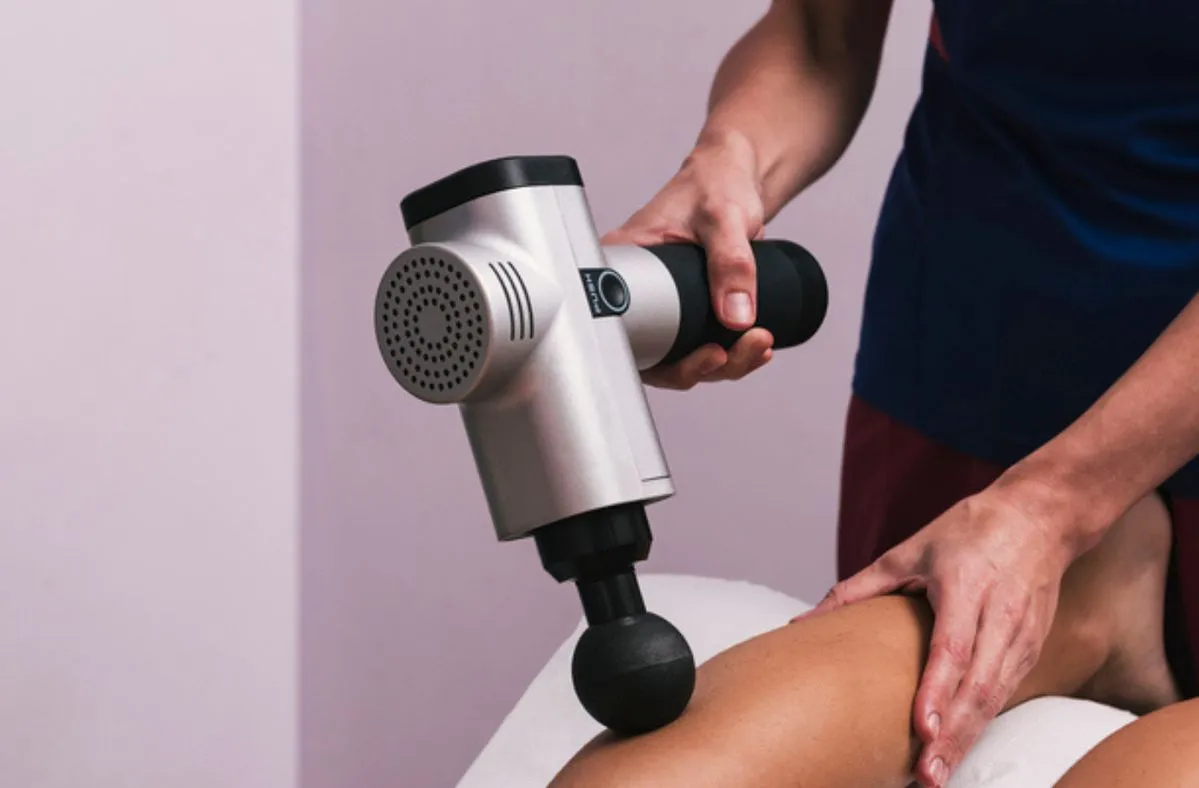The Right Way to Rest: Best Sleeping Positions for Pain, Digestion, and Recovery
May 13, 2025

Getting a good night’s sleep is about more than just how many hours you rest. The way you position your body during sleep can have a profound impact on your overall health and well being. From reducing chronic pain to improving circulation and digestion, choosing the best sleeping position for your specific health needs can dramatically enhance how you feel each morning.
While many people default to a familiar posture out of habit, research shows that tailoring your sleep position to your body’s needs can help alleviate common issues like lower back pain, shoulder stiffness, snoring, and even acid reflux. The best sleeping position is the one that supports your body’s natural alignment, promotes muscle relaxation, and minimizes pressure on vulnerable areas.
One often overlooked but essential element in finding the right sleep posture is your choice of pillow. A supportive pillow that keeps your spine, neck, and shoulders in proper alignment can be just as important as the position itself. Whether you're using a wedge pillow for acid reflux, a cervical pillow for neck pain, or a pregnancy pillow for full body support, the right cushioning can make or break the effectiveness of your sleeping position.
In this guide, we explore the best sleeping positions based on a wide range of health conditions. From peripheral artery disease to sleep apnea and pregnancy, each section outlines a simple yet scientifically backed position designed to relieve symptoms and promote deeper, more restorative rest. Your best sleep might just begin with a simple shift in posture.
How to Sleep Right: A Breakdown of the Best Sleeping Positions
- Best Sleeping Position for Lower Back Pain
- Best Sleeping Position for Peripheral Artery Disease
- Best Sleeping Position for Neck Pain
- Best Sleeping Position for Sleep Apnea
- Best Sleeping Position for Acid Reflux
- Best Sleeping Position for Digestion
- Best Sleeping Position for Circulation
- Best Sleeping Position for Snoring
- Best Sleeping Position for Shoulder Pain
- Best Sleeping Position for Pregnancy
- Sleep on Purpose: Make Every Night Count
Best Sleeping Position for Lower Back Pain
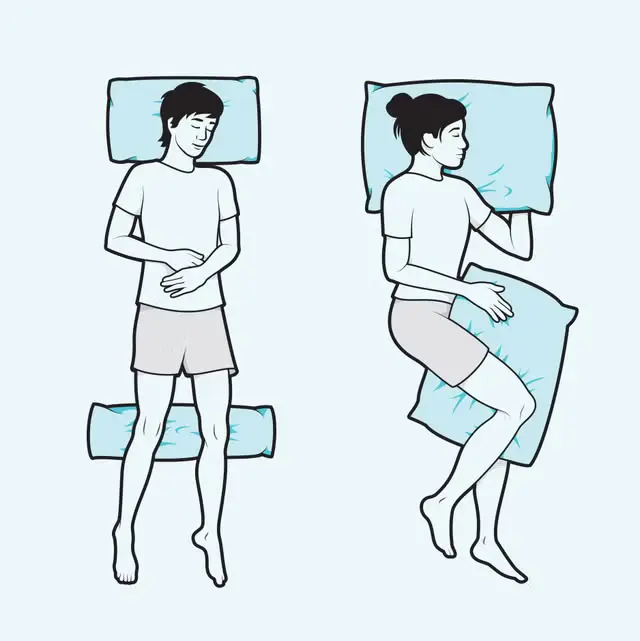
One of the most recommended sleeping positions for lower back pain is lying on your back with a pillow placed under the knees. This posture helps maintain the natural curve of the spine while distributing weight evenly, which reduces pressure on the lumbar region. By keeping the hips and spine aligned, this position minimizes strain and supports recovery from chronic or acute lower back discomfort.
For individuals who suffer from lower back pain during sleep, this back sleeping position can significantly improve comfort and quality of rest. The pillow under the knees works by slightly elevating the legs, which reduces tension in the lower spine and pelvis. This sleeping method also prevents twisting or unnatural bending that can happen when side or stomach sleeping.
When choosing the best sleeping position for back pain, it is important to pair the right posture with a supportive mattress and pillow. Medium firm mattresses are often recommended as they provide the necessary balance between support and comfort. Additionally, using a small lumbar pillow or rolled towel under the small of the back can further enhance spinal alignment.
If you wake up with stiffness or discomfort in the lower back, adjusting your sleeping posture could be the key. Sleeping on your back with a pillow beneath the knees is one of the most effective, low effort ways to relieve lower back tension. It is a posture that promotes long term spinal health and is often endorsed by physical therapists and orthopedic specialists alike.
Best Sleeping Position for Peripheral Artery Disease
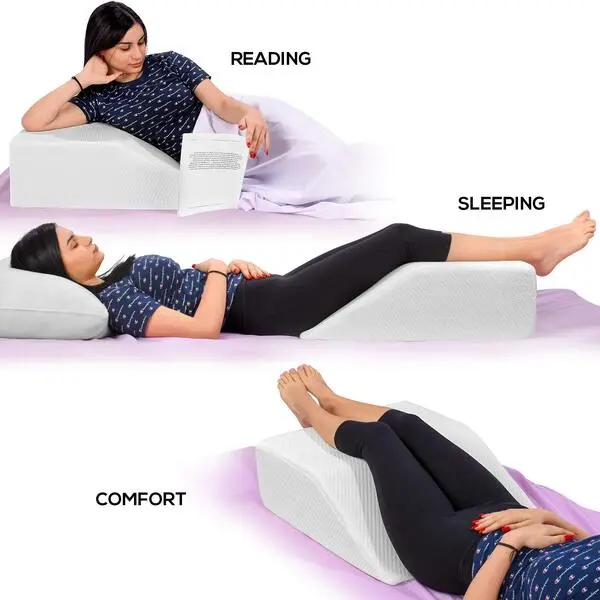
For individuals living with peripheral artery disease, proper sleep posture can help improve blood flow and reduce discomfort during the night. One of the best sleeping positions for peripheral artery disease is lying flat on your back with the legs slightly elevated using a pillow or wedge. This position promotes circulation by encouraging venous return from the legs to the heart, helping to reduce swelling and relieve pressure in the lower extremities.
Elevating the legs while sleeping can be especially helpful for people who experience nighttime leg cramps, numbness, or cold feet associated with poor circulation. By raising the legs above heart level, this position helps counteract the effects of restricted blood flow that is common in PAD. It can also reduce the risk of further complications by supporting vascular function during sleep.
Choosing the right sleeping position for circulation issues is an essential part of managing PAD symptoms. It is recommended to avoid side sleeping positions that compress one leg or restrict arteries, as this can worsen symptoms. A supportive mattress and a firm pillow to raise the legs can enhance comfort and effectiveness of this sleeping style.
If you are searching for the best sleep posture for peripheral artery disease, sleeping on your back with legs elevated may offer a simple and sustainable way to improve overnight circulation. Always consult with a healthcare provider for personalized advice, especially if you are managing advanced stages of PAD or using medical devices like compression stockings.
Best Sleeping Position for Neck Pain
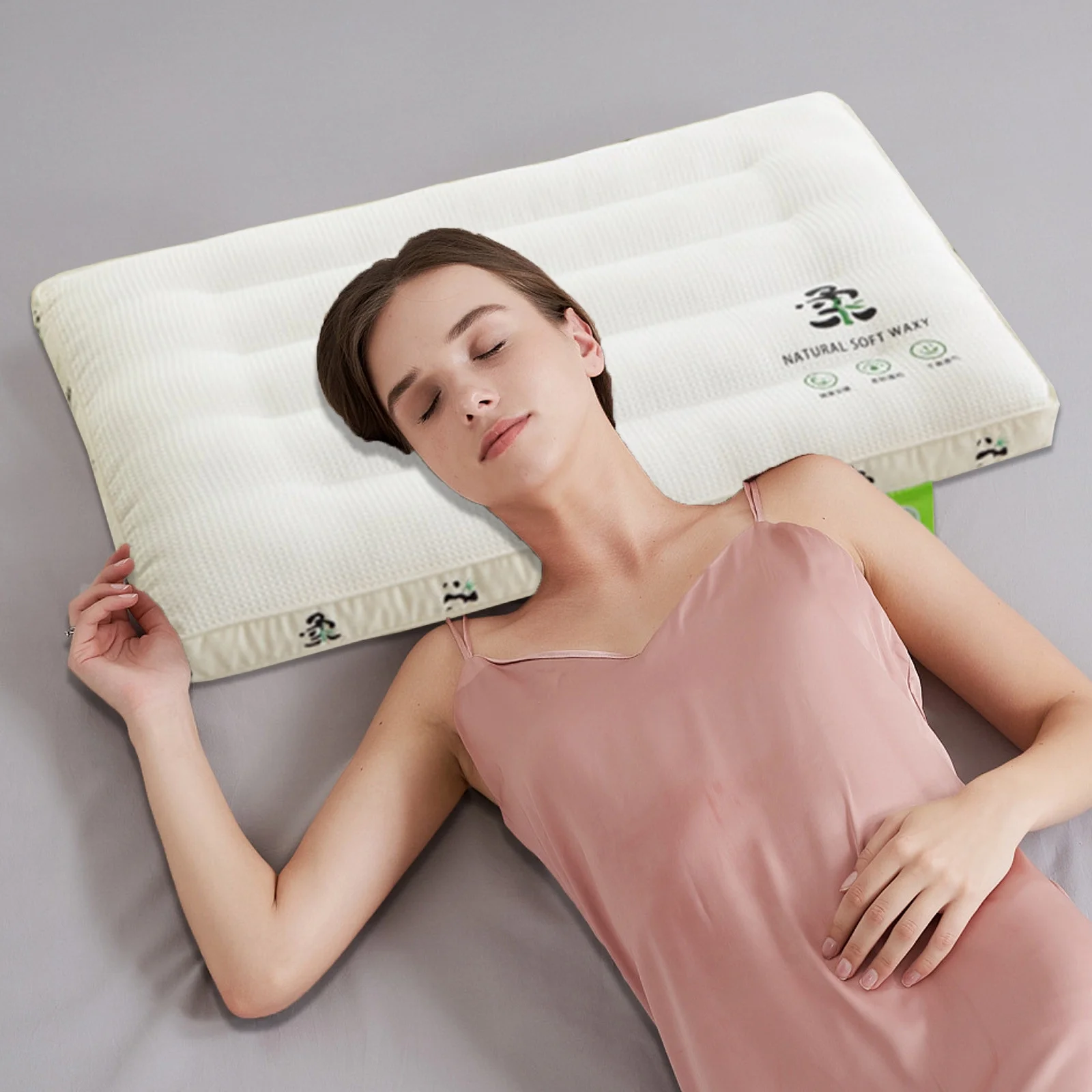
Sleeping on your back with a thin pillow supporting the neck is widely considered the best sleeping position for neck pain. This posture helps maintain a neutral alignment of the spine and reduces unnecessary stress on the cervical vertebrae. Unlike side or stomach sleeping, back sleeping prevents the head from twisting and the neck from bending at awkward angles that can lead to morning stiffness or chronic discomfort.
Using a cervical pillow or a contoured memory foam pillow can enhance this sleeping position by cradling the neck and supporting the natural curve of the spine. These types of pillows reduce pressure points and provide consistent support, making it easier for the muscles to relax during rest. For many people with chronic neck issues, switching to a back sleeping position with proper pillow support can significantly improve sleep quality and pain levels.
People who suffer from neck stiffness or tension headaches often benefit from improving their sleeping posture. Poor neck positioning during sleep can lead to misalignment and muscle strain that worsens over time. Choosing the right sleeping position for neck pain is not only about comfort but also about preventing long term issues like pinched nerves or joint inflammation.
If you regularly wake up with neck soreness, it may be time to reevaluate your sleeping setup. Sleeping on your back with a supportive neck pillow is one of the simplest yet most effective ways to relieve neck tension and promote spinal health. This method is endorsed by many chiropractors and physical therapists for its ability to keep the head, neck, and shoulders in optimal alignment.
Best Sleeping Position for Sleep Apnea
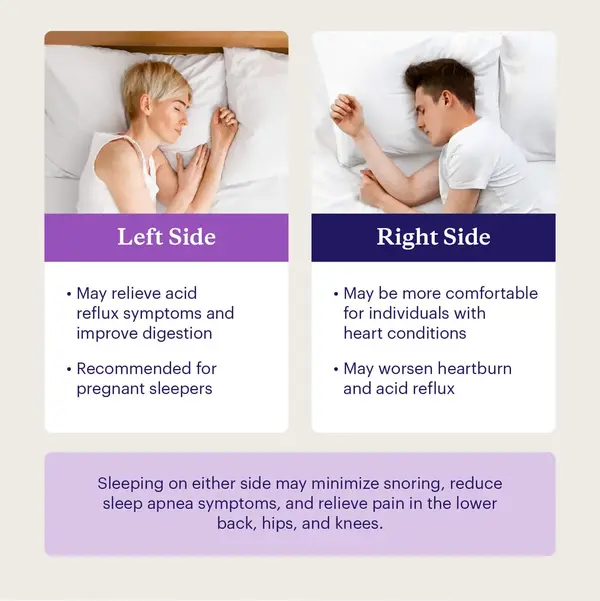
For individuals struggling with sleep apnea, sleeping on the side, particularly the left side is widely recognized as the best sleeping position for reducing symptoms. This posture helps keep the airways open and minimizes the risk of airway collapse, which is common in people with obstructive sleep apnea. By avoiding back sleeping, where gravity pulls the tongue and soft tissues back into the throat, side sleeping supports better breathing throughout the night.
Maintaining an elevated upper body while side sleeping can further enhance this position’s effectiveness. Using a supportive pillow or a wedge can keep the head and neck aligned, reducing the likelihood of snoring and interrupted breathing. People who suffer from both snoring and sleep apnea often find that left side sleeping with a slightly raised head can lead to fewer apneic episodes and more restful sleep overall.
When choosing a sleeping position for sleep apnea, it’s also important to consider mattress firmness and pillow height. A medium firm mattress paired with a pillow that supports both the neck and spine can promote better alignment and comfort. These factors are essential in helping the airway remain open and reducing resistance in breathing during sleep.
If you are looking for natural ways to manage obstructive sleep apnea symptoms, transitioning to side sleeping could be a beneficial step. It is a simple, non invasive strategy that can be easily implemented and maintained. While it may not replace medical treatments like CPAP therapy, the best sleep position for sleep apnea can significantly improve nighttime breathing and overall sleep quality.
Best Sleeping Position for Acid Reflux

The best sleeping position for acid reflux is lying on your left side with your head slightly elevated. This position helps reduce acid backflow from the stomach into the esophagus by taking advantage of gravity and the natural shape of the digestive tract. It also lowers pressure on the lower esophageal sphincter, which can prevent nighttime heartburn and improve overall sleep comfort.
Elevating the head and upper torso with a wedge pillow or an adjustable bed frame further enhances this sleeping posture. A slight incline of about six to eight inches can help prevent gastric contents from rising during the night. This combination of left side sleeping and elevation is one of the most effective non pharmaceutical methods for managing acid reflux symptoms.
This sleep position is particularly helpful for people who suffer from gastroesophageal reflux disease or occasional heartburn triggered by late meals. Avoiding back sleeping is also important, as it may allow acid to flow freely back into the throat. Sleeping on your right side is not recommended for acid reflux, as it has been shown to increase episodes of reflux and discomfort.
If you are looking for natural ways to relieve nighttime reflux, adopting the left side sleeping position with your upper body elevated is a proven and doctor recommended approach. Alongside dietary changes and routine adjustments, this sleeping strategy can make a significant difference in how you sleep and how you feel the next day.
Best Sleeping Position for Digestion

One of the most beneficial postures for nighttime digestive health is sleeping on the left side. This is widely regarded as the best sleeping position for digestion because it allows gravity to assist the natural flow of waste and supports stomach positioning for efficient processing. In this posture, the stomach and pancreas are positioned to rest comfortably, which facilitates optimal enzyme function and encourages smoother digestion overnight.
Sleeping on your left side can also help reduce symptoms such as bloating, gas, and indigestion. It prevents the compression of digestive organs, allowing the intestines to contract more naturally. For individuals who suffer from sluggish digestion or feel discomfort after heavy meals, adopting this sleep position can contribute to more restful sleep and better gastrointestinal function.
This position is also often recommended for people with conditions like irritable bowel syndrome or slow intestinal motility. By supporting the digestive tract’s anatomical structure, left side sleeping encourages healthy peristalsis and may reduce nighttime digestive discomfort. Avoiding right side or back sleeping can be beneficial, as these positions might contribute to reflux or gas buildup in sensitive individuals.
If you are looking for a natural and effortless way to support digestion, consider adopting the left side sleeping position. It is a low impact adjustment that can complement other digestive health strategies like dietary changes and meal timing. Many healthcare professionals recommend it as part of a holistic approach to better digestion and sleep quality.
Best Sleeping Position for Circulation
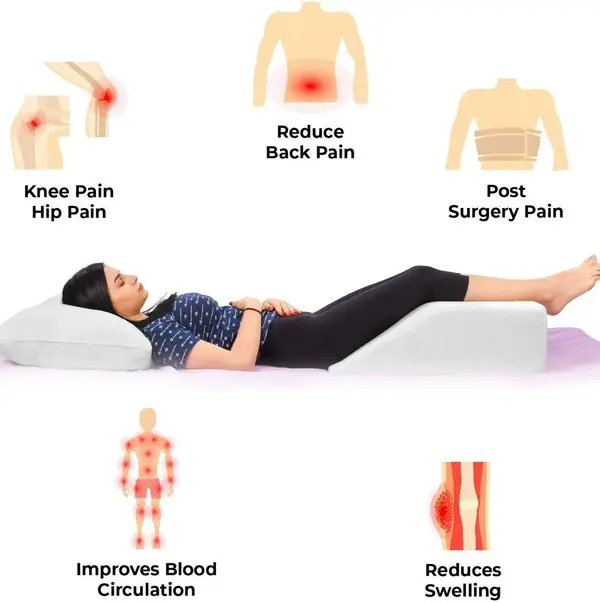
The best sleeping position for circulation is lying on your back with your legs slightly elevated above heart level. This posture promotes healthy blood flow throughout the body by reducing pressure on the veins and encouraging venous return. Elevating the legs with a pillow or wedge while sleeping can help prevent swelling in the lower extremities and relieve pressure in the calves and feet.
This position is especially beneficial for individuals who experience poor circulation, varicose veins, or restless legs syndrome. By allowing gravity to assist blood flow back to the heart, it helps reduce the feeling of heaviness and fatigue in the legs after a long day. A back sleeping position with proper leg elevation is also commonly recommended for people recovering from surgery or managing chronic vascular conditions.
To make this sleeping posture more effective, it is important to use a medium firm mattress that supports spinal alignment while providing comfort. Avoid compressing any limbs, and use soft, non restrictive bedding to allow free movement. The addition of a lumbar pillow can also support lower back comfort while the legs are raised.
If you are searching for a natural way to improve circulation while sleeping, elevating your legs in a back lying position offers a simple yet highly effective strategy. It is a doctor recommended method that can help you wake up with lighter, more energized legs and better overall vascular health.
Best Sleeping Position for Snoring

Sleeping on your side is widely regarded as the best sleeping position for snoring. This posture helps keep the airways open and reduces the likelihood of the tongue and soft palate collapsing into the throat, which is a common cause of snoring. Side sleeping allows for easier breathing and can be particularly beneficial for individuals with mild to moderate snoring who do not have sleep apnea.
Among side sleeping options, lying on the left side may offer added benefits by supporting better airflow and reducing acid reflux, which can also trigger snoring in some individuals. Placing a body pillow along the back can help keep the sleeper in a side position throughout the night and prevent rolling onto the back, where snoring is more likely to occur.
Using a supportive pillow that maintains head and neck alignment is also important when addressing snoring through sleep posture. Pillows that are too high or too low can lead to airway obstruction and worsen snoring. A medium firmness pillow that keeps the head elevated and the chin slightly forward is often ideal for encouraging consistent side sleeping.
If you or your partner struggle with nightly snoring, transitioning to a side sleeping position could make a noticeable difference. It is a simple, non-invasive change that often results in quieter sleep and fewer nighttime disruptions. For many people, adjusting sleep posture is one of the most effective and immediate strategies to reduce snoring naturally.
Best Sleeping Position for Shoulder Pain

The best sleeping position for shoulder pain is lying on your back with a small pillow placed under the affected arm. This posture helps relieve pressure on the shoulder joint by keeping it supported and neutral throughout the night. Back sleeping prevents the body from compressing the shoulder, which is a common issue inside sleeping and can worsen inflammation or existing injuries.
When dealing with shoulder pain, maintaining proper alignment is key. Sleeping on your back with your arm slightly elevated and your hand resting across your chest can reduce strain on the rotator cuff and surrounding muscles. This setup keeps the shoulder in a stable position and promotes circulation, which aids in nighttime recovery and reduces stiffness upon waking.
If you prefer to sleep on your side, it is essential to avoid lying on the painful shoulder. Instead, lie on the opposite side and place a firm pillow in front of your chest to hug or rest your top arm on. This creates space and support for the shoulder and prevents overextension or twisting, which are common causes of nighttime shoulder discomfort.
For anyone searching for relief from nighttime shoulder pain, adjusting your sleeping posture can make a significant difference. Back sleeping with strategic arm and shoulder support is one of the most doctor recommended positions for pain management. Pairing this with a supportive mattress and orthopedic pillow may enhance results and contribute to better quality sleep.
Best Sleeping Position for Pregnancy

The best sleeping position for pregnancy is lying on the left side with a pillow placed between the knees and under the belly. This posture helps improve blood flow to the placenta and reduces pressure on the uterus, liver, and kidneys. Left side sleeping also promotes better circulation to the heart and allows for optimal oxygen and nutrient delivery to the baby, which is why it is widely recommended by healthcare providers.
Using a pregnancy pillow or placing individual pillows at key pressure points can make this position even more comfortable. Supporting the belly and legs helps reduce strain on the hips and lower back, which are common sources of discomfort during pregnancy. This setup also helps prevent rolling onto the back, a position that can compress the vena cava and potentially decrease circulation.
As the pregnancy progresses, comfort can become more difficult to maintain at night. Maintaining the left side sleeping position with proper support not only eases aches but also helps reduce swelling in the legs and ankles. Pregnant individuals who experience shortness of breath or heartburn at night can also benefit from slightly elevating the upper body.
If you are expecting and looking for the best sleep posture during pregnancy, left side sleeping with full body support is one of the safest and most effective strategies. It aligns with both maternal and fetal health goals, ensuring restful sleep while minimizing physical discomfort and promoting overall wellness throughout the third trimester.
Sleep on Purpose: Make Every Night Count
Finding the best sleeping position for your body is more than a comfort decision, it is a form of self care. Whether you struggle with chronic pain, poor circulation, or conditions like sleep apnea or reflux, adjusting your sleep posture can provide significant relief. Every section of this guide was designed to help you rethink the way you rest, so that you wake up feeling not just rested, but restored.
Good sleep starts with good positioning, and the benefits are far reaching. From improving digestion and reducing snoring to boosting circulation and easing back pain, the right sleep posture works quietly through the night to support your health. When paired with the right pillow and mattress, it becomes part of an intentional wellness routine that improves both how you sleep and how you feel throughout the day.
There is no one size fits all approach to sleep. What matters is finding a posture that aligns with your specific health needs and adjusting your environment to support it. Try small changes. An extra pillow, a side shift, a new sleep angle and observe how your body responds. With time, these adjustments can lead to deeper, more consistent sleep and noticeable improvements in physical comfort and energy.
No matter your age, condition, or sleeping habits, there is a position that can help you sleep smarter. Use this guide as a reference, revisit it as your needs evolve, and remember that restful, restorative sleep is not just possible. It is within reach.

